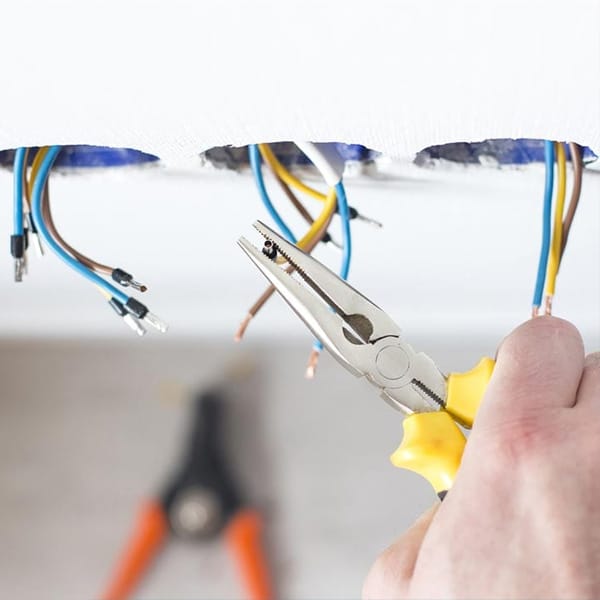Being able to distinguish between AC and DC wires or single and three-phase systems ensures optimal speed and maximum safety when carrying out electrical tasks. Knowing the colour codes can help handle the wiring professionally. The current, up-to-date Australian wire colour code for single-phase wires includes three types:
- Light Blue: neutral wire with low potential
- Brown: live wire with high potential
- Green & Yellow: earth wire
The old colour code included black for neutral wires, red for active and green for earth wires. It is important to know the current standards and have your wiring replaced if the colours are not matching. You can rely on a professional team at GA Perry to do this expertly and efficiently!
Understanding the Australian Colour Coding for Single-Phase Wiring
The blue colour represents the natural wire which has a low potential. It has replaced the old black wire used before 2004. Its purpose is to keep the electricity safely away from the home appliances and prevent overloading. This type of wire is positioned near the end of the electrical circuit as it captures electricity after it travels through the live and earth wiring. Since it is heated, the blue wiring requires extra cautious handling.
The brown colour is used for active, highly potential wires that bring electricity to home appliances and divert the flow in the event of danger. Skilful electricians working with wiring must make sure that electricity is not flowing through to prevent electric shocks.
Green & Yellow stripes represent earth wires which are there to ensure safety. The wire attached to the metal case allows the connection of the cable and your electric appliances to be connected to the ground and prevent potential harm from an electrical surge. The green and yellow cables have replaced the green ones used before 1977.
Colour Coding for Three-Phase Wires
Do you know the difference between single and three-phase wiring? The Australian standard for single-phase wiring is 230V, while the three-phase connection gets close to 400V. The three-phase wires comprise three or four wires of different colours, and they enable a strong electrical current needed for many modern appliances for both commercial and residential properties.
To be able to distinguish between single and three-phase wires, you need to know how to read the colours. In addition to the three colours for single-phase wiring, you should understand the difference between various shades for three-phase wires:
- Phase 1: brown colour
- Phase 2: black colour
- Phase 3: grey colour
- Earth: green & yellow
- Neutral: light blue
Have Experienced Electricians Handle Your Electrical Wiring
Knowing the Australian colour code is not enough to be able to DIY your wiring. We strongly recommend you appoint trusted electricians who will do the job safely and professionally. Firstly, you need a safety assessment and inspection of your property. If you have an older home, it is essential to replace and update your wiring to adhere to the latest standards. The colour coding is different in each country and tends to change over time. Make sure that you have regular maintenance and check-ups to ensure your wiring is always up-to-date and working properly.
The team at GA Perry has the knowledge and experience when it comes to cabling and wiring. You can rely on us for all your electrical needs from safety inspections and maintenance works to house renovations and electrical switchboard replacements. Regardless of the type of service you need, we promise to be there on time, or we will do it for free!




